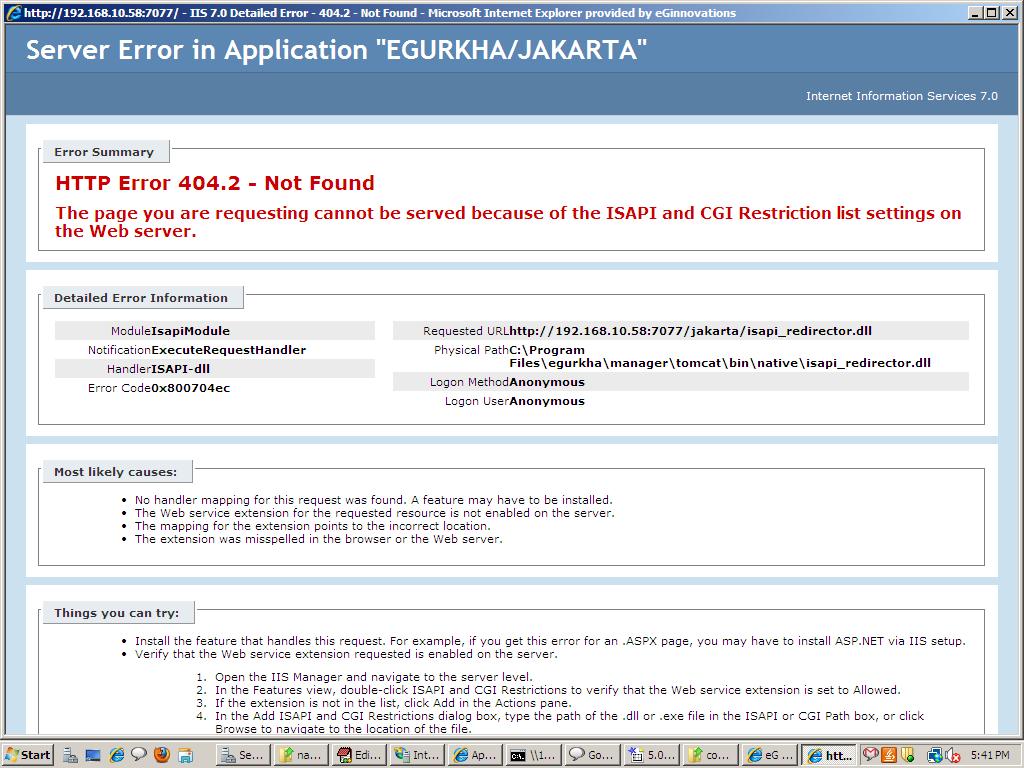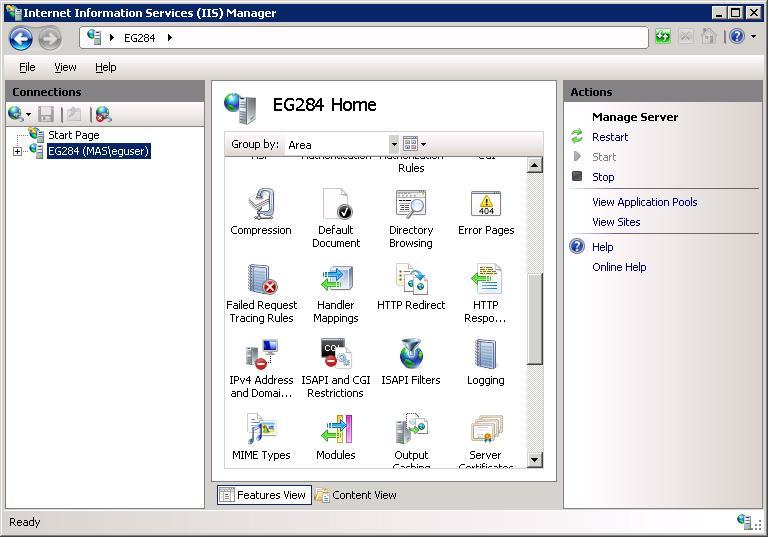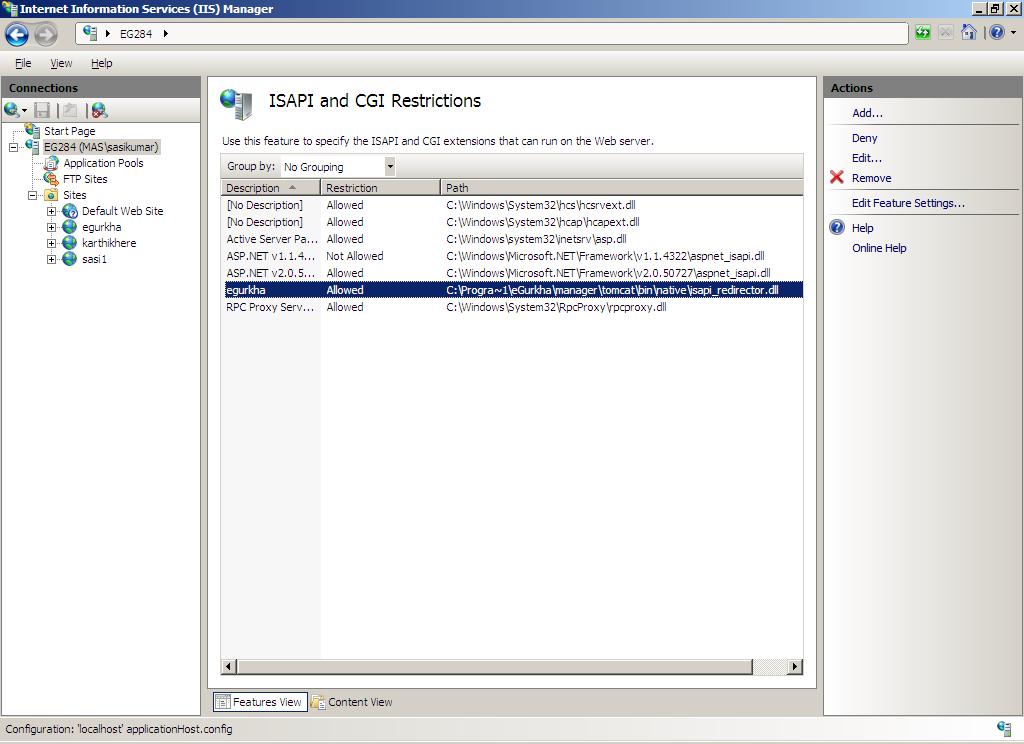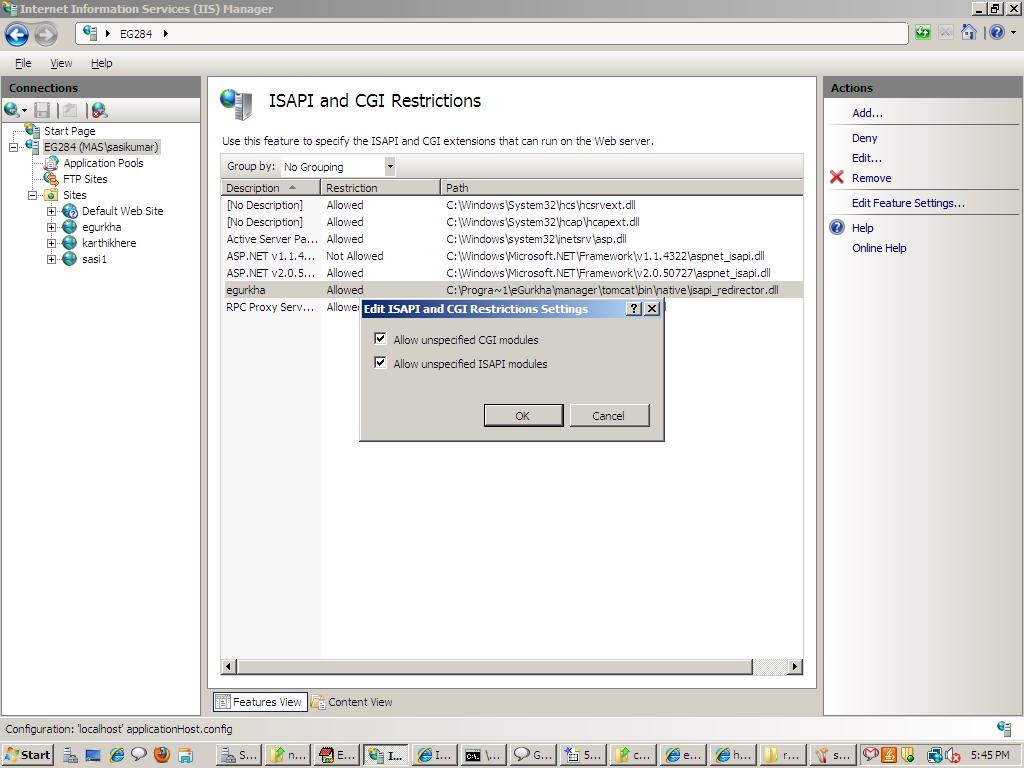Installing the eG Manager
-
The eG manager installation does not even start. What could be wrong?
Please check for the following:
- Did you accept the license agreement?
- Check if you possess the administrative privileges on Windows.
-
Do you have the pre-requisites for
- An operating system version that eG supports
- The right service pack and option pack (for Windows environments)
-
The eG manager installation failed. What could be wrong?
- Verify that if the eG manager and agent are being installed on the same system, the same user owns the eG directories.
- Make sure that the operating system locale setting is English.
-
I installed the eG manager on a Windows 2008 server, but I could not start the manager. To troubleshoot the failure, I opened the IIS Manager console, browsed the tree in the left pane to locate the ‘egurkha’ website, and tried to connect to the web site. Once I did that, the following error message appeared.

Figure 1 : The error message that appeared when the ‘egurkha’ web site listing in the IIS 2008 manager console was clicked
-
Why did this happen? What do I do to resolve this?
This error typically appears if IIS and CGI restrictions have been imposed on the egurkha web site, preventing its execution on the web server. If you receive such an error message, then, do the following to resolve the issue:
- Login to the Windows 2008 server.
- Open the Internet Information Services (IIS) Manager console on the server.
-
Once the console opens, click on the node representing the IIS web server in the tree-structure in the left pane of the console (see Figure 2).

Figure 2 : Clicking on the node representing the IIS web server in the left pane of the console
-
The right pane will then change to display a variety of properties that can be defined for the IIS web server. Browse the list to locate the isapi and cgi Restrictions property, and click on it. Figure 3 will then appear listing the ISAPI and CGI extensions that can run on the web server. Look for egurkha in the list, and when found, check to see whether it is set to Allowed. If not, click on the Edit Feature Settings button indicated by Figure 3.

Figure 3 : Checking whether the ‘egurkha’ extension is Allowed to run on the web server
-
Clicking on the button indicated by Figure 8.3 will invoke Figure 8.4. To lift the ISAPI and CGI restrictions off the egurkha extension, select the Allow unspecified CGI modules check box and the Allow unspecified ISAPI modules check box in Figure 8.4, and click the ok button. You will then find that the egurkha listing in the isapi and CGI Restrictions window is set to Allowed.

Figure 4 : Lifting the ISAPI and CGI restrictions from the egurkha extension
